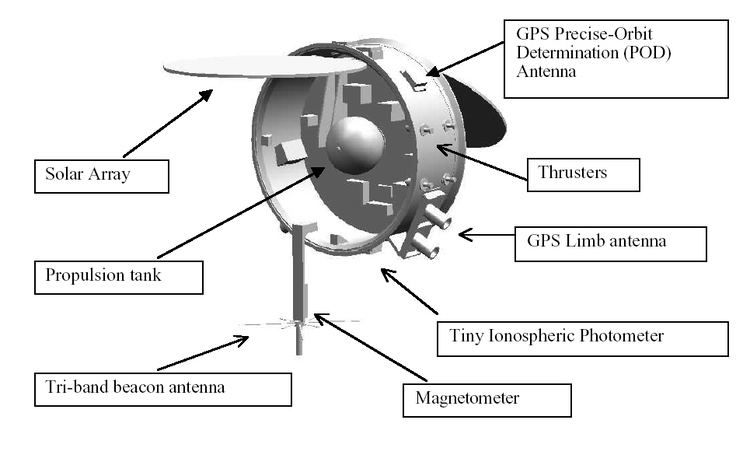Names Formosat 3 Website COSMIC at UCAR | SATCAT no. 29047 through 29052 | |
 | ||
COSPAR ID 2006-011A through 2006-011F Manufacturer | ||
Constellation Observing System for Meteorology, Ionosphere, and Climate (COSMIC) is a program designed to provide advances in meteorology, ionospheric research, climatology, and space weather by using GPS satellites in conjunction with low Earth orbiting (LEO) satellites. The term "COSMIC" may refer to either the organization itself or the constellation of satellites (also known as FORMOSAT-3, 福爾摩沙衛星三號, in Taiwan). The constellation is a joint U.S.-Taiwanese project with major participants including the University Corporation for Atmospheric Research (UCAR), the National Science Foundation, the Naval Research Laboratory (NRL), the Air Force Research Laboratory (AFRL) on the U.S. side and the National Space Organization (NSPO) on the Taiwanese side.
Contents
The total cost of the project is US$100 million, 80% of which is being provided by NSPO, and the remainder by various U.S. agencies.
After experiencing several delays, the launch of the COSMIC satellite constellation atop a Minotaur launch vehicle from Vandenberg AFB occurred at 01:40 GMT, on April 15, 2006, despite heavy fog. The satellites, which orbit at an altitude of 500 miles, required over a year to move into the correct positions to provide full global coverage.
Instruments
The COSMIC satellites are equipped with three primary forms of instrumentation for remote sensing, including:
Deployment
All 6 microsatellites were launched on a single launch vehicle and deployed into a single parking orbit after launch. The spacecraft were then deployed into separate orbital planes through the use of precession due to the oblateness of the Earth and raised to a final orbital altitude over the course of several months. Scientific data were collected during the deployment process, along with experimental validation and calibration.
Status
Currently only four of the microsatellites remain fully functional. The FM2's power system lost 50% of its output in February 2007, while FM3's solar panel also malfunctioned since August 2007. As a result, both satellites are operating in a degraded state, capable of returning data only during specific solar angles. The FM6 went out of control in September 2007, but control was restored by November 16 of the same year. FM3 had severe power problem since July 6, 2010. It is declared not functional since then. FM4, FM5, and FM6 have had battery aging problem.
